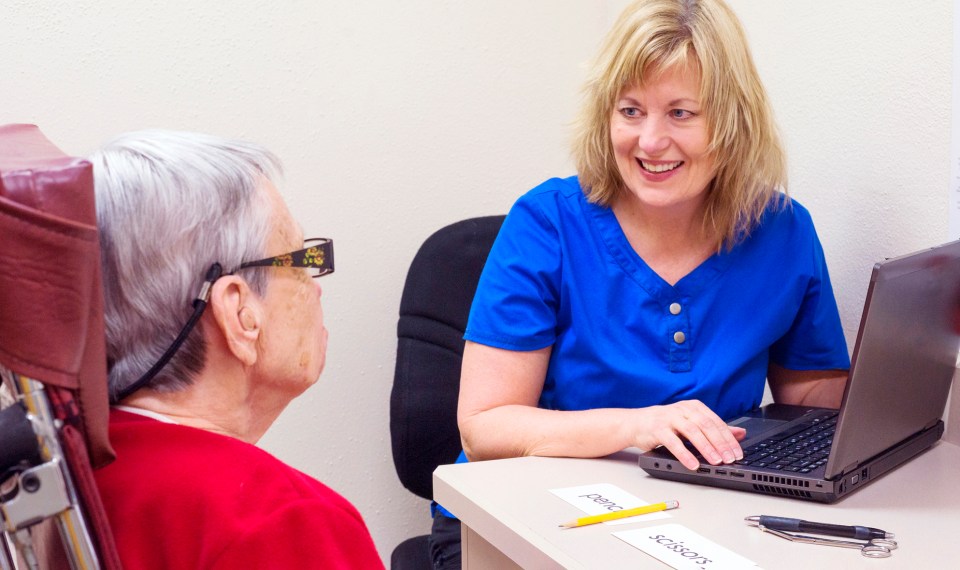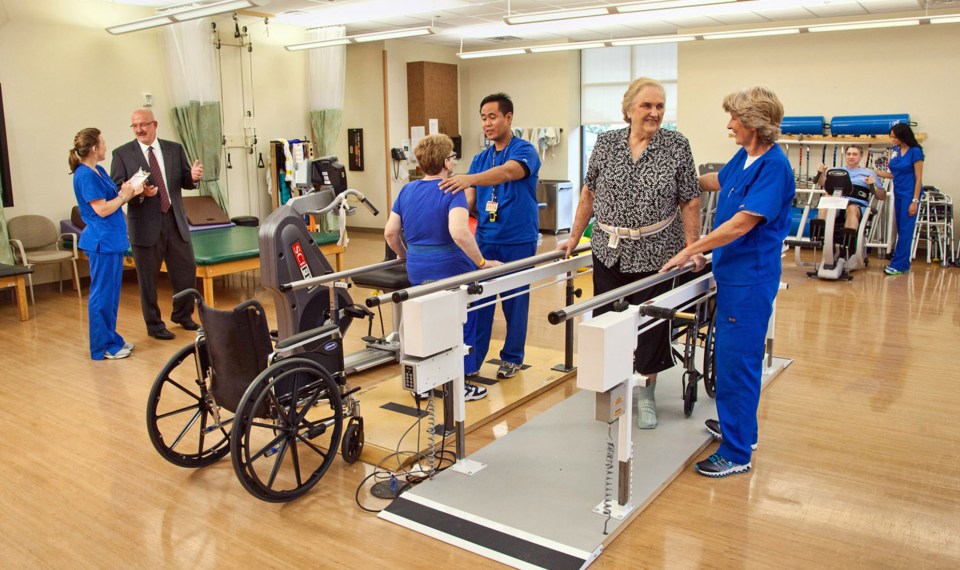After a serious accident or injury, your doctor or care team may recommend you receive intensive therapy at an inpatient rehabilitation hospital. The interdisciplinary team approach at inpatient rehabilitation hospitals allows for collaboration and a high level of skilled intervention and care, especially when a physical therapist and occupational therapist are paired together to work with you.
What are the Differences in Occupational and Physical Therapy?
A physical therapist assesses and treats the strengths and deficits in movement such as bed mobility, transferring, walking, and going up and down stairs.
An occupational therapist assesses and treats the strengths and deficits in daily living tasks such as bathing, dressing, toileting, eating and grooming.
Both evaluate and develop interventions to address how these deficits can impact your ability to return home.
How do PTs and OTs Address Movement and Weakness?
A physical therapist assesses and treats decreased movement and weakness in the leg muscles and core strength.
An occupational therapist assesses and treats decreased movement and weakness in the arm muscles and core strength.
Both address strengthening in order to increase their patients’ ability to engage in valued tasks and activities for that patient.
A physical therapist assesses and treats a patient’s ability to walk, and may utilize a corrective assistive device in order for a patient to move from place to place.
An occupational therapist assesses and treats a patient’s ability to make the transfers necessary to go from a chair to the toilet, toilet to the shower or around the kitchen.
Both work to improve a patient’s ability to get around their home and decrease the need for a patient’s family or friends to provide assistance.
A physical therapist assesses and treats balance with the goal of helping a patient progress to being able to walk without a rolling walker, cane or other assistive device.
An occupational therapist assesses and treats balance in order help a patient progress to standing at a sink to brush their hair or standing at a countertop to prepare a favorite meal.
Both use intervention techniques designed to improve a patient’s balance in order to decrease risk for falls and increase a patient’s ability to engage with their community.
How Do PTs and OTs Work Together to Get You Home?
A physical therapist creatively problem solves to assist patients with their ability to navigate stairs in order to get in out and of your home.
An occupational therapist creatively problem solves to assist you with everyday tasks patients will need to perform at home, such as transfers on and off toilet and transfers in and out of the shower.
Both physical and occupational therapy use creative approaches and critical problem solving to advance their patients to the highest level of independence they are capable of.
A collaborative approach between physical and occupational therapy helps you to meet and exceed your goals.
Kelly Neal is an occupational therapist at Encompass Health Rehabilitation Hospital of Cincinnati at Norwood.
The content of this site is for informational purposes only and should not be taken as professional medical advice. Always seek the advice of your physician or other qualified healthcare provider with any questions you may have regarding any medical conditions or treatments.




